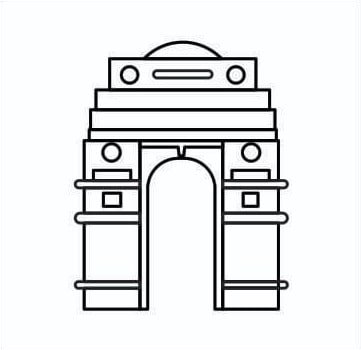Waiting for that one letter to arrive with the postman on their doorstep to penning down their next without any expectations of receiving an immediate reply, there was a time when Indians happily treasured their relationship with post offices until telephones and e-mails entered their lives.
The tinkling of the bicycle bell was the telltale sign of the arrival of a postman. Back in the 1970s, communication was synonymous with the postal service. Every postal stationery communicated a message, from telegram to postcards to inland letters.
Telegrams were often associated with bad news. For a short and crisp message, postcards were sent. Inland letters were used for regular correspondence between relatives, friends, family, or business.
Eager heads would pop out of their houses with the bicycle bell sound. Some anticipate a letter from their loved ones, and some eagerly await the news of their result. Whether the bearer of good or bad news, letters were cherished by one and all.
Postmasters in small villages and towns were the gossip bearers. Being a part of the rarefied circle of literate individuals fluent in English, they often acted as scribes and readers for the village folks. Often you can find them taking a break in the verandahs of the house, sipping a cup of hot coffee while reading out the letter received by the grandfather from his grandson in the US. Or, during the hot, scorching summers, they can be found enjoying cold buttermilk while scribing a reply to the village’s daughter.
It was an everyday affair to bring the postman cup of tea and some extra biscuits to deliver their letter first. Graduated young men and women eagerly waiting for their employment letter would pester the postmaster to first deliver their letters from Madras and other cities.
For the older generation, mention the word ‘Post Office’, and it will conjure up memories of a room abuzz with activities, the rat-a-tat of telegrams; bored-looking clerks sorting inland letters, postcards and stamps; the rhythmic beat of rubber stamps; the peculiar smell of post office glue and the rusty red post boxes around which conversation started and friendships bloomed. People knew the postman personally, and when this unique harbinger of news did not arrive for a few days, they got worried.
Since the technological advancement and introduction of computers, laptops and cell phone, emails and messaging has become the new norm. Contacting somebody is at the tip of your fingers. Messaging has become an instant affair with the launch of applications like Whatsapp and Gmail. Ironically, the telegram has faded and morphed into a ‘Telegram’ application.
The Post Offices now have a quite lull to them. The constant chatter and activities have slowed to a snail’s pace when dispensing postcards, telegrams and inland letters. A postman these days does not need a bag to carry his letters. Whatever 5-10 letters he has delivered, he can fasten it to the seat of his bicycle. People have just stopped writing letters to each other. These days it is just the official documents from government offices delivered through the postal service.
There is something so endearing, heartfelt and personal about writing a letter. It urges you to say much more. The pen is indeed mightier than the keyboard. The emotions of the letter are lost between the constant clicking of the keyboard keys, and the message delivered is plain and monotonous. The anticipation of receiving a reply after a significant amount of time is a beautiful feeling.
The younger generation of the 21st century hardly knows the priceless value of a hand-written letter.
The excitement and emotions you experience while reading a letter from your loved one can never be compared to digital communication. The words and even the feel of the paper became a part of a person’s fond memories and would go on to become an heirloom.
Artistic Design meets the Traditional Art of Writing. In this 21st century, when most of the younger generation has not experienced the anticipation and excitement of receiving a handwritten postcard, The Heritage Art is working towards bringing back the tradition of handwritten notes.
With Heritage Art’s postcard series, curate your collection of unique collectable postcards. Illustrated with sketches or adorned with photographs of landmarks, each postcard set is inspired by India’s vibrant culture and heritage.
Let’s interweave heartfelt stories with timeless Indian monuments and landmarks!


















